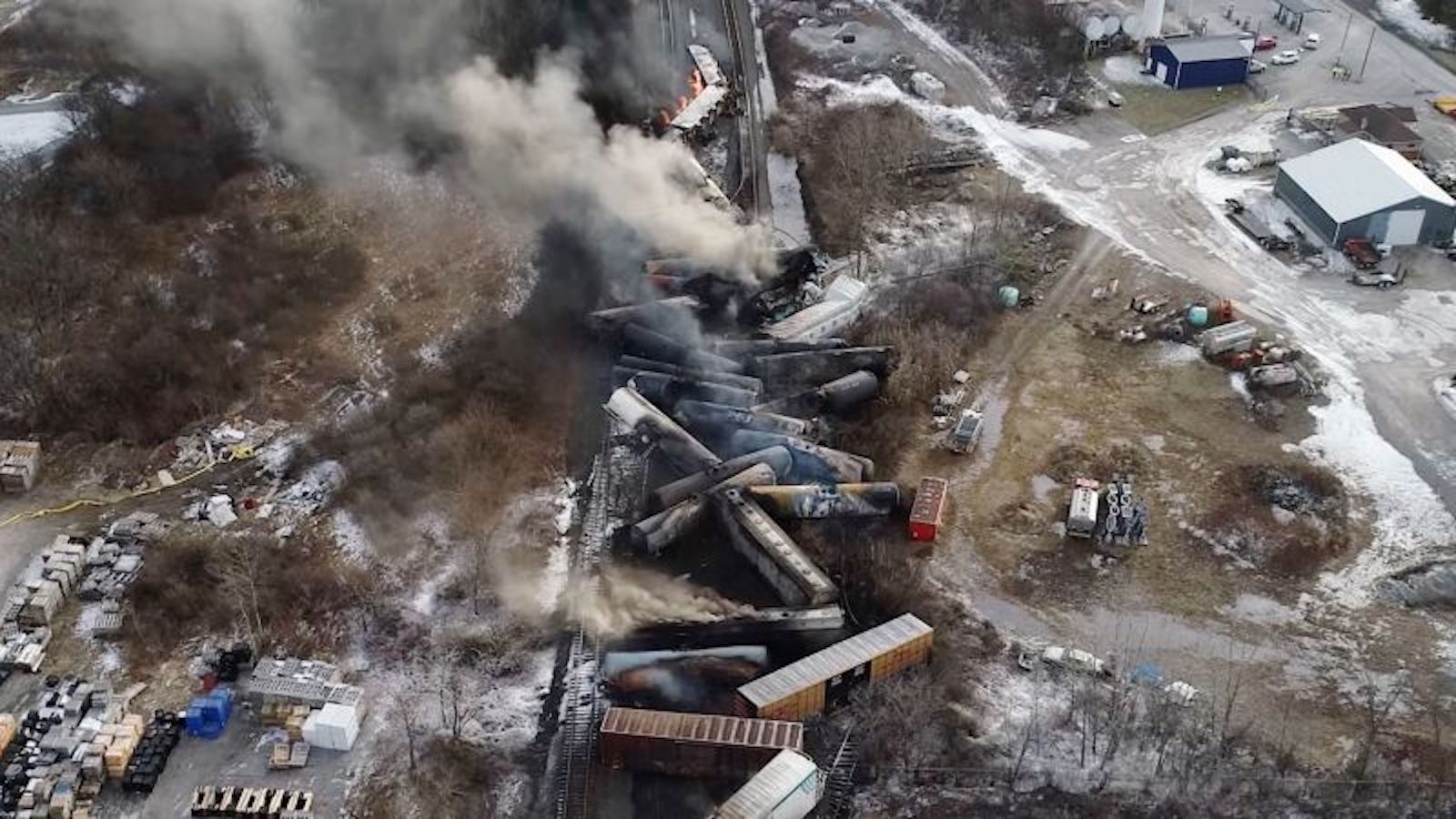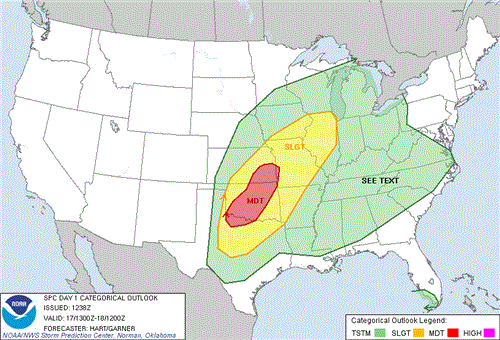Toxic Chemical Residue From Ohio Train Derailment: Building Contamination

Table of Contents
Types of Toxic Chemicals and Their Impact on Buildings
The derailment released a cocktail of hazardous substances, posing significant risks to building integrity and human health. Understanding the specific chemicals and their properties is crucial for effective remediation.
Vinyl Chloride and its Persistence
Vinyl chloride, a known carcinogen, is particularly concerning due to its volatility and ability to penetrate building materials.
- Seeping into Structures: Vinyl chloride can easily seep into porous materials like drywall, insulation, and even concrete, leaving behind persistent residues. The chemical's gaseous nature allows it to spread throughout a building, contaminating air and surfaces.
- Long-Term Health Risks: Exposure to vinyl chloride is linked to a range of serious health problems, including liver damage, various cancers, and cardiovascular issues. Long-term exposure, even at low levels, poses a significant threat.
- Remediation Challenges: Removing vinyl chloride from building materials can be challenging and often requires specialized techniques, adding to the complexity and cost of remediation efforts.
Other Hazardous Materials and Their Effects
Beyond vinyl chloride, other chemicals released during the derailment, such as butyl acrylate and ethylhexyl acrylate, also pose significant threats.
- Butyl Acrylate: This chemical is an irritant to the eyes, skin, and respiratory system. It can also penetrate building materials, potentially causing long-term health issues through inhalation or skin contact.
- Ethylhexyl Acrylate: Similar to butyl acrylate, ethylhexyl acrylate can irritate the skin, eyes, and respiratory system. Its potential for long-term building contamination requires careful assessment and monitoring.
- Other Chemicals: The exact composition of the released chemicals continues to be investigated, and further analysis may reveal additional substances requiring remediation strategies.
Assessing and Monitoring Building Contamination
Effective remediation starts with accurate assessment and ongoing monitoring of building contamination. This involves employing a range of sophisticated testing methods.
Methods for Detecting Chemical Residues
Several techniques are used to detect toxic chemical residue in buildings following the derailment.
- Air Sampling: Air samples collected throughout a building can reveal the presence of airborne chemicals, providing crucial data on air quality and the extent of contamination.
- Surface Swabbing: Swabbing surfaces with specialized materials allows for the collection and analysis of chemical residues left on building components.
- Material Analysis: Direct analysis of building materials (e.g., drywall, insulation) can determine the level of chemical penetration and the extent of contamination within the structure.
- Importance of Proper Sampling: Accurate and reliable testing requires meticulous sampling techniques to ensure representative results and informed decision-making regarding remediation strategies.
Long-Term Monitoring Strategies
Continuous monitoring is essential to fully assess the long-term effects of the derailment and the potential for delayed contamination.
- Monitoring Frequency: Regular testing, perhaps monthly or quarterly, is needed to track changing levels of contamination over time.
- Data Collection and Analysis: Meticulous record-keeping and analysis of test results are essential for understanding trends and evaluating the effectiveness of remediation efforts.
- Government and Consultant Roles: Government agencies and environmental consultants play a crucial role in overseeing monitoring programs, ensuring accuracy, and providing guidance on remediation strategies.
Remediation and Cleanup Strategies for Contaminated Buildings
Addressing building contamination requires a multi-pronged approach involving several decontamination techniques and long-term preventative measures.
Decontamination Techniques
Various methods can be employed to decontaminate buildings affected by toxic chemical residue.
- Air Scrubbing: Specialized air filtration systems can remove airborne chemicals, improving air quality within the building.
- Surface Cleaning: Cleaning contaminated surfaces with appropriate solvents and detergents can reduce the level of surface contamination.
- Material Removal/Replacement: In severe cases, removal and replacement of heavily contaminated building materials may be necessary.
- Decontamination Worker Safety: Specialized protective equipment and safety protocols are essential for workers involved in decontamination efforts.
Long-Term Building Management and Prevention
Mitigating future contamination requires proactive strategies for building management and material selection.
- Building Material Selection: Using building materials less susceptible to chemical absorption, such as non-porous materials, can reduce future contamination risks.
- Ventilation Systems and Air Filtration: High-quality ventilation systems and air filters can significantly reduce the concentration of airborne contaminants.
- Regular Inspections: Regular inspections can help identify potential contamination issues early, facilitating prompt remediation and preventing widespread damage.
Conclusion
The Ohio train derailment has tragically highlighted the devastating consequences of toxic chemical spills and the long-term threat of building contamination. Thorough testing, effective remediation strategies, and proactive prevention measures are paramount for protecting public health and the environment. Understanding the specific chemicals involved, their impact on buildings, and available remediation techniques is vital for mitigating the long-term consequences of this disaster. Addressing the issue of toxic chemical residue from the derailment is critical for both individual and community well-being. Stay informed about the ongoing investigation and remediation efforts. If you suspect building contamination, contact environmental professionals immediately to conduct thorough testing and implement appropriate remediation strategies to ensure the safety of your community and address the potential dangers of toxic chemical residue.

Featured Posts
-
 Soerloth La Liga Da 4 Gol Birden Ilk Yari Soeleni
May 25, 2025
Soerloth La Liga Da 4 Gol Birden Ilk Yari Soeleni
May 25, 2025 -
 Myrtle Beach Newspaper Garners 59 Sc Press Association Awards
May 25, 2025
Myrtle Beach Newspaper Garners 59 Sc Press Association Awards
May 25, 2025 -
 Charlene De Monaco El Lino Perfecto Para El Otono
May 25, 2025
Charlene De Monaco El Lino Perfecto Para El Otono
May 25, 2025 -
 Thierry Ardisson Et Laurent Baffie Fin De L Amitie Decryptage Des Accusations
May 25, 2025
Thierry Ardisson Et Laurent Baffie Fin De L Amitie Decryptage Des Accusations
May 25, 2025 -
 2025 Tornado And Flash Flood Summary April 4 Update
May 25, 2025
2025 Tornado And Flash Flood Summary April 4 Update
May 25, 2025
